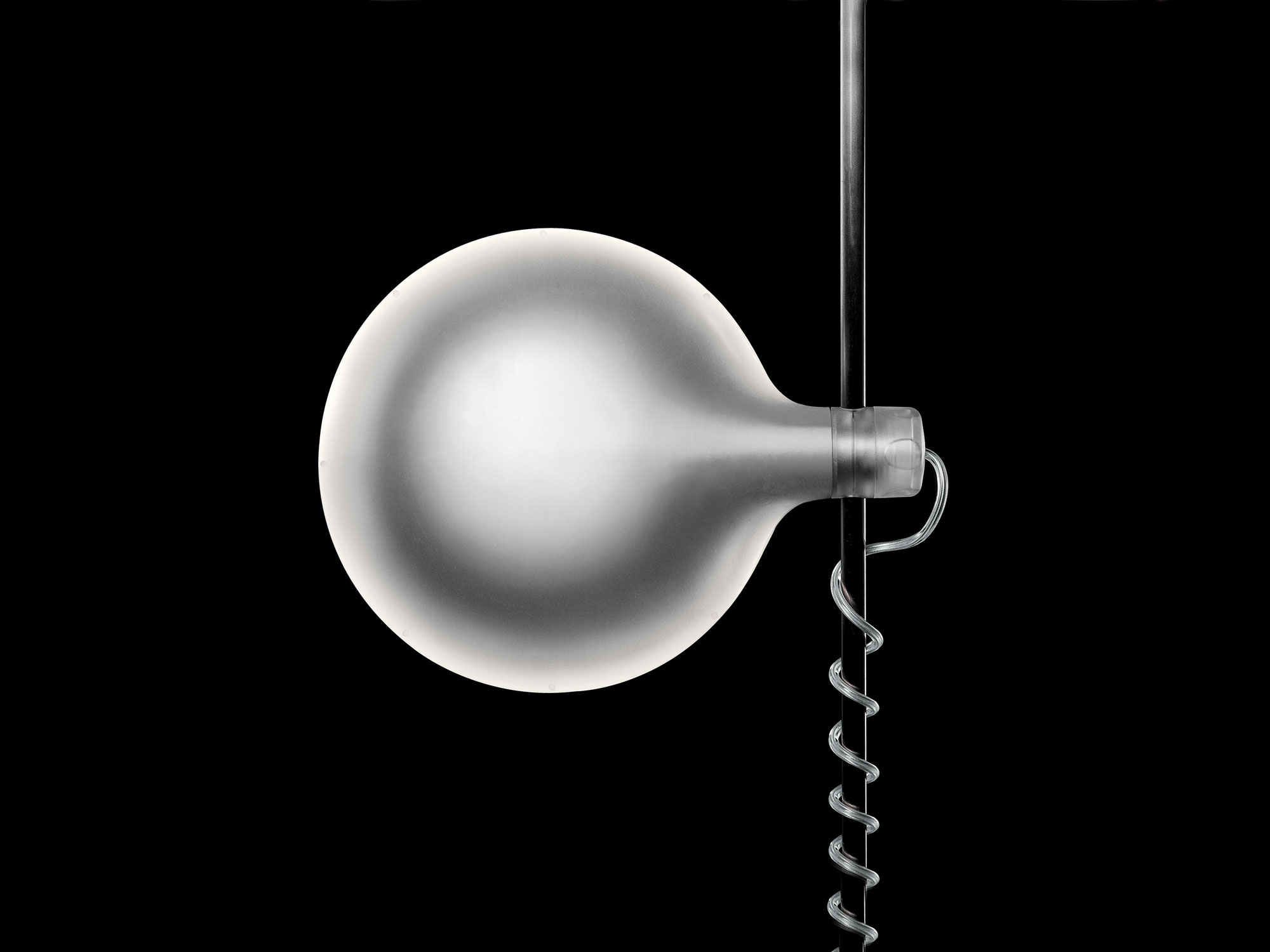The briefing from Piero Gandini at Flos was to look at designing a new adjustable uplighter, a typology made popular by Joe Colombo in the seventies, which has been off the menu for a while, due to lack of demand. The first issue we addressed was what to do with the power cable when the light is adjusted. Early proposals from Flos were to use a sprung cable winder similar to the system used on vacuum cleaners, but I didn’t like the idea of housing the mechanism on the base. Thinking about the movement, I suggested using a wound cable like the ones on old telephones. Flos managed to find a cable which would keep its spring and we proceeded with the design of the head, which was originally conceived as an aluminium casting covering a reflector. Flos pushed for something with more performance suggesting a plastic housing around a cast reflector, which could be used to catch a small amount of the light and diffuse it around the back of the lamp, compensating for the blindspot and providing an improved overall quality of light. Once the basic model was resolved we adapted the design as a wall and ceiling model and made a proposal for a ceiling model on an armature. I’ve always disliked the central position of most ceiling light fittings and the idea of solving the problem with a rotating armature appealed to me. It allows the lighting of the room to be adjustable and makes it far more interesting.
Extract from Everything but the Walls by Jasper Morrison (Lars Müller Publishers, 2006)
Lighting
